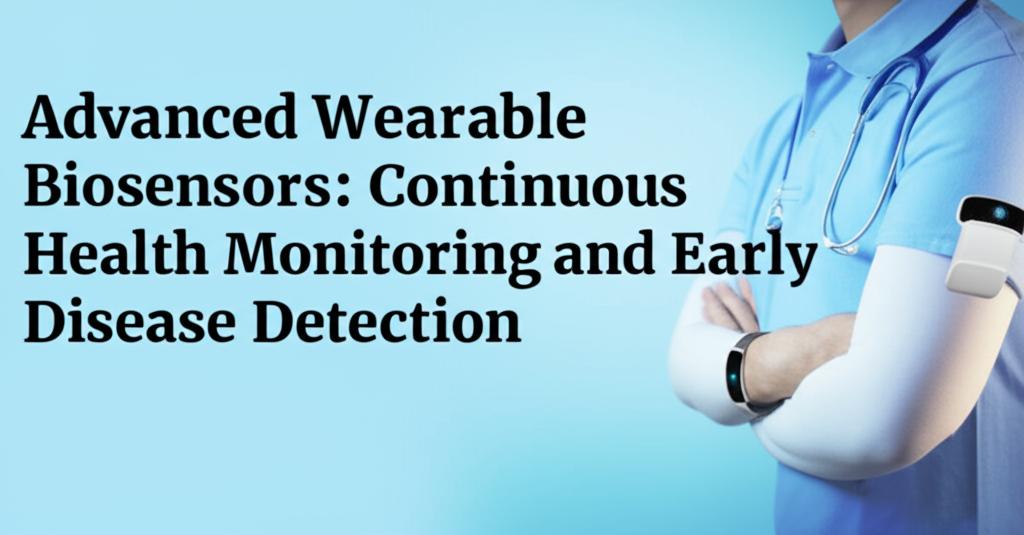Wearable biosensors represent a rapidly advancing field where healthcare, technology, and personalized medicine converge. These devices, often integrated into accessories, clothing, or applied directly to the skin, enable continuous, real-time monitoring of a wide array of physiological and biochemical parameters, transforming how we approach health management and disease detection.
The Power of Continuous MonitoringUnlike traditional health checks that offer only snapshots in time, wearable biosensors provide an ongoing stream of data. They work by using sophisticated sensors embedded within wearable formats like smartwatches, patches, or even smart textiles. These sensors can track vital signs such as heart rate, heart rate variability, ECG signals, blood pressure, respiratory rate, blood oxygen saturation (SpO2), and body temperature. Beyond physical metrics, they are increasingly capable of monitoring biochemical markers like glucose levels (via continuous glucose monitors or CGMs), electrolytes, lactate, cortisol, and other biomarkers found in non-invasively accessible biofluids like sweat, tears, saliva, or interstitial fluid. This constant flow of information allows individuals and healthcare providers to visualize physiological status, identify trends, and understand the body's response to various activities, treatments, or lifestyle changes.
Driving Early Disease DetectionOne of the most significant impacts of advanced wearable biosensors is their ability to facilitate early disease detection. By continuously tracking subtle changes in physiological or biochemical signals, these devices can identify anomalies or patterns that might indicate the onset of a health issue, often before noticeable symptoms appear. For instance, algorithms analyzing heart rate variability or ECG data can detect arrhythmias or predict potential cardiac events. CGMs provide real-time glucose readings, crucial for managing diabetes and preventing hypo- or hyperglycemia. Monitoring respiratory rate and oxygen saturation can help manage chronic conditions like COPD or asthma, potentially predicting exacerbations. Temperature sensors can offer early warnings of infections. Research is also exploring the use of specific biomarkers detected by wearables for the early detection or monitoring of conditions ranging from metabolic disorders and hormonal imbalances to neurodegenerative diseases and even cancer.
Technological Advancements Fueling ProgressRecent breakthroughs are significantly enhancing the capabilities, comfort, and accessibility of wearable biosensors:
- Miniaturization and Materials Science: Sensors are becoming smaller, more accurate, and more energy-efficient. Advances in materials science have led to the development of flexible, stretchable, and biocompatible materials like polymers, hydrogels, nanomaterials, and even liquid metals, allowing sensors to conform comfortably to the body or be seamlessly integrated into textiles (smart fabrics).
- Non-Invasive and Minimally Invasive Sensing: There's a strong push towards non-invasive methods that analyze biomarkers in sweat, tears, saliva, or interstitial fluid, reducing the need for blood draws. Innovations include smart contact lenses analyzing tears, smart tattoos, and microneedle patches that offer minimally invasive access to interstitial fluid or even deliver medication based on sensor readings. Sweat analysis platforms are becoming increasingly sophisticated.
- Artificial Intelligence (AI) Integration: AI and machine learning are pivotal in making sense of the vast amounts of data generated by wearables. These algorithms can process complex datasets in real-time, filter out noise, identify subtle patterns and anomalies missed by human observation, predict future health events (like disease flare-ups or responses to therapy), and provide personalized insights and recommendations. AI transforms raw data into actionable health intelligence, enabling a shift towards predictive and personalized healthcare.
- Wireless Communication and Connectivity: Efficient wireless technologies like Bluetooth Low Energy, NFC, and others ensure seamless data transmission from the sensor to smartphones or cloud platforms for analysis and review by users and clinicians.
The applications for advanced wearable biosensors are diverse and growing. They are becoming integral to managing chronic conditions like cardiovascular disease, diabetes, and respiratory illnesses. They empower fitness and wellness tracking, monitoring activity, sleep quality, and stress levels. Remote patient monitoring enabled by these devices allows clinicians to oversee patient health outside traditional settings, improving access to care and enabling timely interventions. Emerging uses include monitoring recovery after surgery, managing mental health, optimizing medication dosage, and even applications in oncology for monitoring treatment response or side effects.
While challenges remain regarding sensor accuracy and stability, data security and privacy, power management, seamless integration into clinical workflows, and regulatory hurdles, the pace of innovation is rapid. Future developments promise even more sophisticated, multi-functional sensors, improved AI analytics, and greater integration, further revolutionizing continuous health monitoring and empowering individuals and clinicians with the tools for proactive, personalized health management and earlier disease detection.

